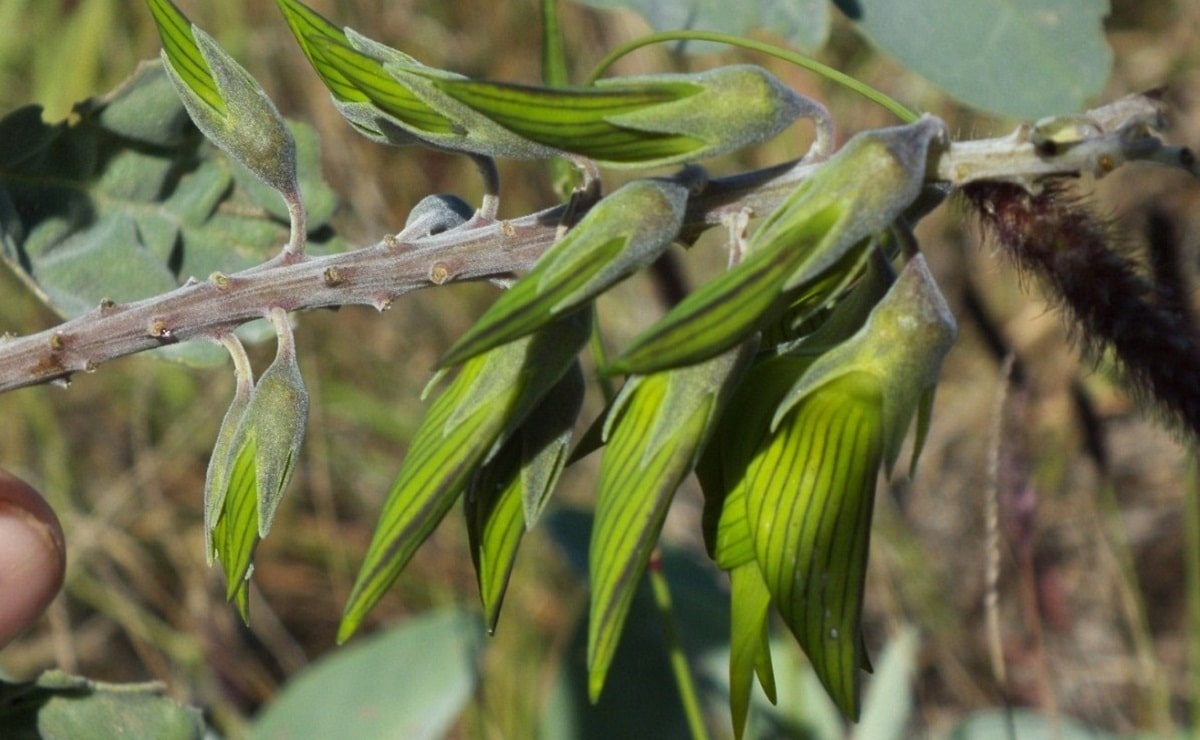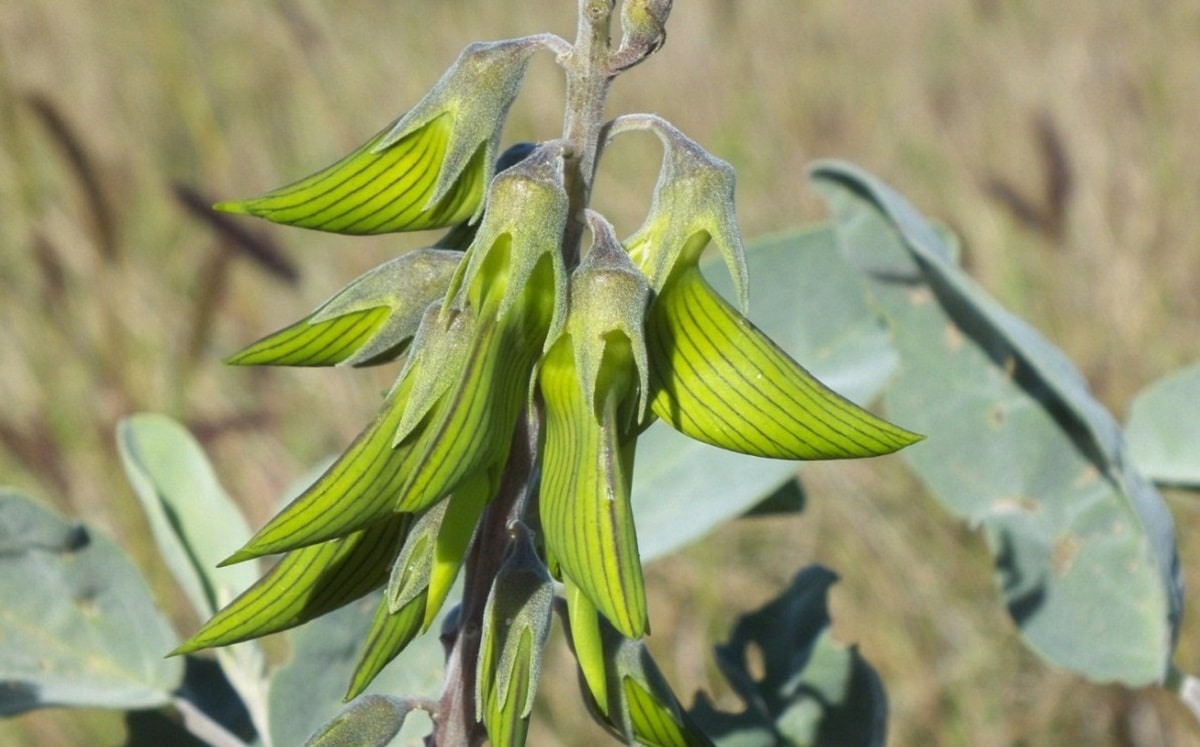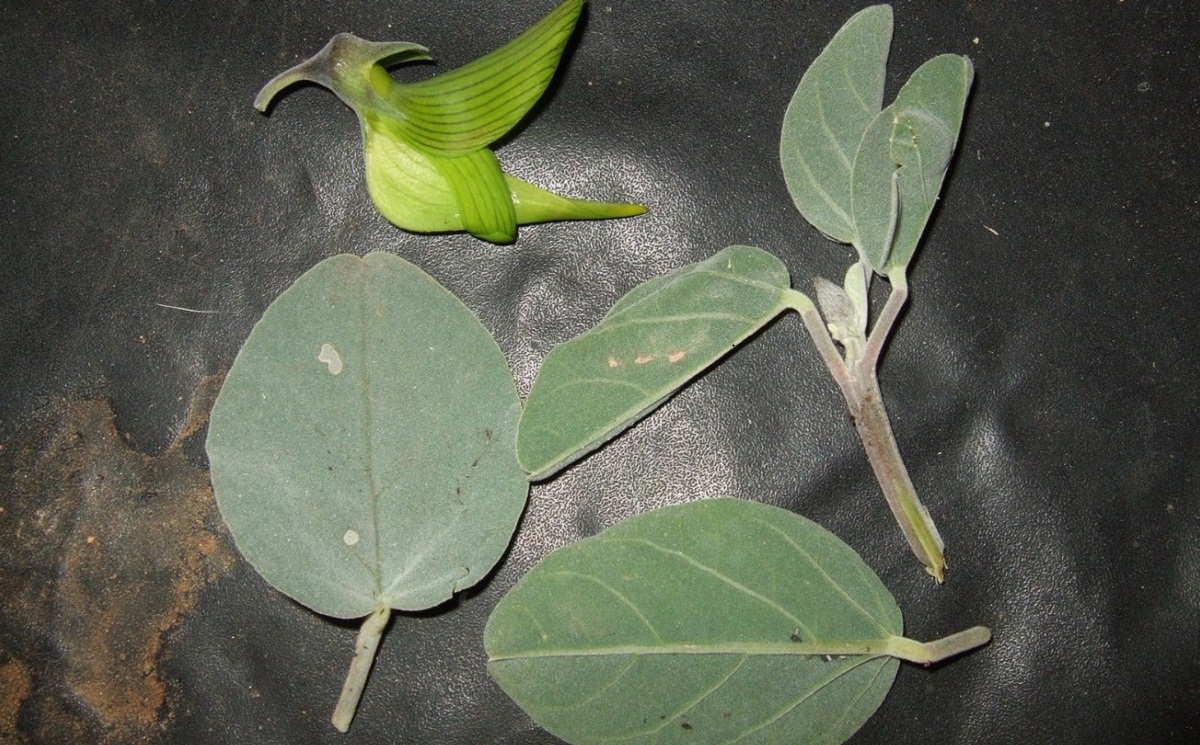
In the plant kingdom you can find a great variety of species with unique characteristics. Some are so simple but with striking colors, while others have their appeal in the design of their flowers or leaves.
There are also plants such as Crotalaria cunninghamii which has a shape very identical to that of a hummingbird. Who has not seen this plant, possibly believe that it is a real hummingbird. But it is not like that, it is just a beautiful creation that is in danger of extinction.
General data of the Crotalaria cunninghamii

So today we will dedicate this space and time to tell you much of the information you have to know about this beautiful species. So if you have the opportunity to have a cutting or seed, do not waste your time on whether to cultivate it or not and do it without thinking.
The first thing you should know about this species is that It is a native and / or native plant of the North of Australia, is where it is mostly seen naturally. We comment on this since the plant can be cultivated in other places that does not have to be its native country.
As you well know, the scientific name that has been given to this species is that of Crotalaria cunninghamii, but in a vulgar way it is known as a green hummingbird flower. It is enough to see the shape of this plant to understand the reason for the name that has been given to it.
In the same way, the plant belongs to the Fabaceae family. The life cycle is that of a perennial plant And as we already mentioned, it can be cultivated or reproduced in two ways: the first one is by means of cuttings and the other by seeds.
This last form it is somewhat easier than if it is compared with other species, since it is enough to take the seeds, put them to boil in water and then dry them and plant them so that they begin to germinate. So you see, this process is quite simple.
Now, regarding the reproduction of the plant by cuttings, that you know that it has to be solely and exclusively stem cuttings. This is because there are plants that just take some of its leaves to grow the plant.
However, the plant has to be in direct full sun and although it could survive in a place where it is semi-shade, but it is best to give it an open and sunny spaceIn addition, it has to be in a warm environment since it cannot withstand cold temperatures.
A very important detail for those who live in temperate or warm zones is that they have the opportunity to grow it in their gardens. Of course For that there are some growing conditions that we will mention later.
Features

Up to this point you know the most general data and that can be of great help when having this beautiful and peculiar plant in your garden. But you still don't know the most important thing about the Crotalaria cunninghamii, and what are they her CARACTERISTICS.
This is how we will detail you the most important and remarkable of this species below: It is a plant with the characteristic of a shrub, which can grow to a maximum height of 4 meters. Of course, it will depend a lot on the conditions and the maintenance you give it.
It has branches that are hairy or with a wool-like texture to the touch. The foliage that each branch that grows from the main stem has a foliage with a rather dull green color.
It has oval-shaped leaves which are only 3 cm long. The flowers are much larger and have a greenish color, which closely resembles the green of a pea. These are striped and have thin, fine black lines.
The growth of the flowers is developed through long spikes where it is located at the end of each branch. The union between the flower and the branch makes that from afar look like a hummingbird is sucking nectar full Crotalaria cunninghamii.
The green hummingbird flower has certain non-physical traits and characteristics that make it very close to or are related to soybeans, alfalfa, and other species. It is usually seen many in spaces such as sand dunes with an unstable terrain and in sediments where water and nutrients are abundant.
To be grown in gardens, it needs constant watering without reaching the point of waterlogging. Plant It has medicinal properties that were previously implemented using this species to treat eye infections in people.
Uses

The first use that we will mention to you this way, is that It is a species that you can perfectly use to decorate your home. The downside to this is that you can't have it indoors, as it needs sunlight to live.
On the other hand, if you have it in the center of your garden or in a space where it can be easily seen by people, in the same way it will give a new color and view to your garden. The next thing is that as already mentioned, it has some interesting properties that helps treat eye infection problems, such as conjunctivitis, although this use is mostly cultural.
Curiously the plant also has large amounts of fiber, which makes it a highly demanded and commercialized species. But in view of this great demand, it is one of the reasons why the Crotalaria cunninghamii it has become on the list of plant species in danger of extinction.
Of course this threat is only seen in the place where the greatest concentration should be, that is, its natural habitat. On the other hand, there is no known natural cause that could or may be affecting the existence of the plant so far.
Finally, another of the possible uses that has been given and is being given to this species is for the manufacture of rope, fishing nets, paper and pulp. This is thanks to the fact that the amount of fiber is very high and above all of good quality.